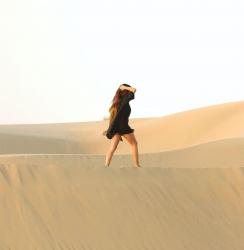Top 10 Places to go Mushroom Picking in France
Updated by Vanessa M in July 2023.
Mushroom picking is a celebrated past time by families and friends all over France. The country is home to over 3000 mushroom varieties, and it’s considered a hobby to learn which strains are edible, and which ones are poisonous.
There is something incredibly satisfying about foraging your own food while in France, and travelers love getting involved in mushroom picking activities. The best time to pick mushrooms in France is from August to September.
Where to pick mushrooms in France? The best thing to do is to head to any of the country’s forest terrains. It’s here you’ll find the pick of the lot.
1. South-East France
A lot of people come to France wanting to forage for truffles, and though this is possible, it’s a very meticulous and specific activity to take part in.
For truffles, you’ll have to venture to the south eastern regions of France. This is an affluent part of the country, known for medieval architecture, museums and rich cultural history. The French capital, Paris, is part of the south eastern area.
It’s in this part of the country that 70% of all French truffles are sourced. Visit Provence or Gard for the best options.

Provence, France – by Pimlico27 – Wikimedia Commons
2. Pyrenees National Park in France
Foraging for mushrooms is considered to be an ‘off the beaten track’ activity for tourists. It’s what locals do to survive daily life, not something one tends to do whilst on vacation.
To experience that which is off the beaten track, one needs to leave the track entirely. The French national parks are some of the best zones to forage for mushrooms, and I recommend having a handbook with you to ensure you’re able to tell the edibles from the poisonous.
The Pyrenees National Park is on the French and Spanish boarder. It’s a maze of forestry, waterfalls and gorgeous mountains. The climate is perfect for mushroom spotting year round; don’t hesitate to inquire at the visitor’s center for the best trails to follow.
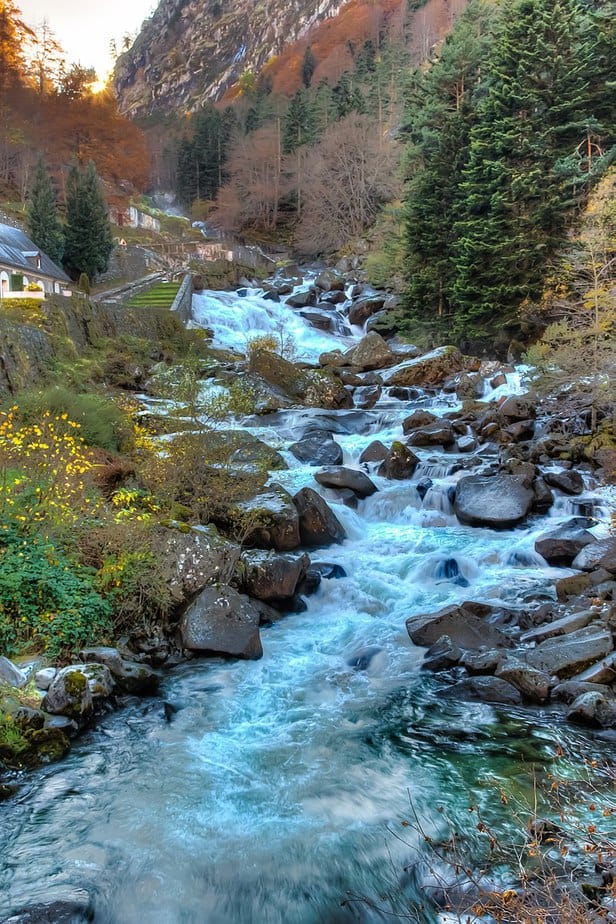
Pyrenees National Park – by Joao Carlos Medau – Wikimedia Commons
3. Broceliande Forest in France
France has a number of expansive forests that are open for public exploration. The Broceliande Forest is situated in Brittany. It is often referred to today as the Paimpont Forest.
King Arthur is said to have had his biggest adventures through this very forest. There is something incredibly majestic and enchanting about this piece of land; the Barenton Fountain is also rumored to have healing properties.
Walk beneath the towering oak tress and keep an eye out for fungi peeping out from beneath the roots and foliage. Bring a blanket; a nap beneath the branches is extremely tempting.

Broceliande Forest – by DarwIn – Wikimedia Commons
4. Cevennes National Park in France
The Cevennes National Park is situated in the glorious south of France, and is actually protected by UNESCO. It’s a world heritage site, under UNESCO standards and French law, which means it is safe, well kept and historic.
The mountains and zooming landscapes will take your breath away. Cevennes’ terrain is extremely rugged, but holds natural beauty beyond words. Find the limestone caves and explore the tiny village attached to the park.

Cevennes National Park – by Rémi Doutressoulles – Wikimedia Commons
5. Tronçais Forest in France
The Tronçais Forest in Auvergne is home to an oak tree that was planted in 1580. People come from far and wide to explore this natural wonder, and may collect mushrooms along the way for personal enjoyment.
This forest is arguably the most beautiful oak grove in all of Europe. There are also facilities for hiking, cycling and swimming available in Tronçais. Spring and summer are always the best seasons during which to visit forests in France, though there is something totally mesmerizing about the colors that come out of these oak trees come autumn time.
6. Vanoise National Park in France
The Vanoise National Park is situated about a two hour drive from Chamonix. It’s a massive park land that actually extends into Italy, making it one of the largest alpine national parks in the world. Vanoise looks like a landscape right out of untouched Canada.
Wildlife are a big attraction here in this park. It’s home to wolves, birds and lynx that travelers aspire to catch glimpses of. Mushrooms grow freely throughout the park, though you’ll have to spend some time getting to know the terrain before the best spots are made known to you. Anyways head toward the woods!
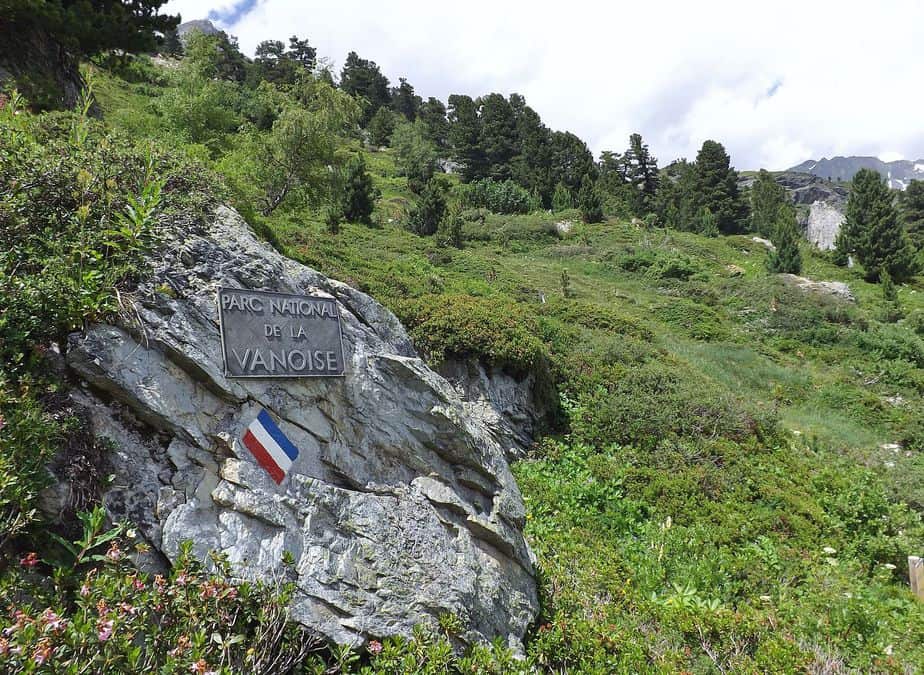
Vanoise National Park – by Florian Pépellin – Wikimedia Commons
7. Fontainebleau Forest near Paris
The Fontainebleau Forest is the backyard of the Fontainebleau castle. This is a property that was once the summer home to France’s royal family. It’s a short drive from Paris, making it one of the easier forests to forage in if you’re simply visiting the capital.
These alluring grounds are thought to have inspired some of the greatest French painters throughout history. The forest is a playground for young and old.
For 10 facts about the Castle of Fontainebleau, click here!

Fontainebleau Forest – by Andy_Cassrol – Wikimedia Commons
8. Compiègne Forest in France
When these same royals wanted to hunt, they came to the Compiègne Forest in Hauts de France.
The densely wooded areas and thriving natural life made it an ideal place to find both meats and veggies, dead and alive. It’s a breathtaking forest and home to some of the oldest trees in Europe. Compiègne is situated less than an hour from Paris.
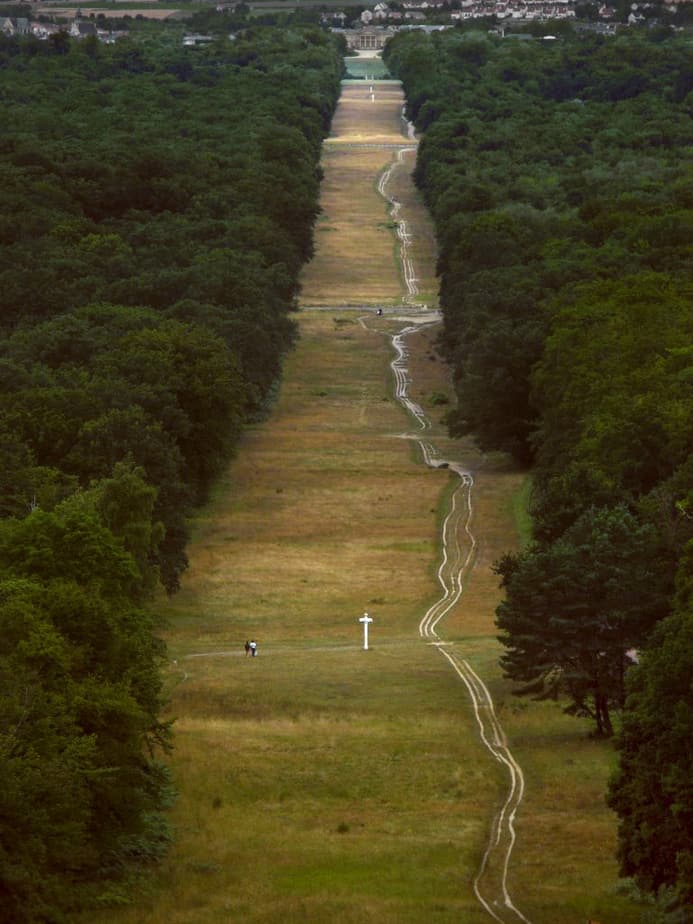
Compiègne Forest – by Donarreiskoffer – Wikimedia Commons
9. Haguenau Forest in France
Nature lovers come from all over the world to spend time in the Haguenau Forest in Alsace; a 900 year old natural wonder.
The forest contains rivers, ponds, lynx, beavers, and giant fir trees you would normally only encounter in storybooks. The forest is abundant with fungi and a top spot for foragers.
10. Saint-Germain-en-Laye Forest in France
Another forest just west of Paris, the Saint-Germain-en-Laye is a giant former hunting ground with a forest-floor lush with plant life and mushroom clusters.
There is an annual fun fair held in this park, as well as a permanent Italian restaurant for visitors to enjoy. Ask them where they get their mushrooms!
Best mushroom foraging season in France
In France, the best mushroom foraging season is often from September to November. The climatic conditions, such as temperature and humidity are optimal for mushroom growth during this time period. Although different kinds of mushrooms have different climatic demands, fall often provides a favorable combination of moisture and temperature for many sorts. France’s forests and woodlands are home to a diverse range of edible mushrooms, and many mushroom enthusiasts eagerly await the autumn season to explore and gather them.
Some popular edible mushrooms you could come upon while foraging in France include:
Cepes/Porcini (Boletus edulis): The porcini mushroom is the most well-known and often consumed wild fungus. Porcini mushrooms require woody environments (coniferous or deciduous) as well as a particular amount of moisture in the soil to thrive. Its popularity stems from the fact that this mushroom has some culinary aspects that are easy to highlight in cooking as well as some exceptional nutritional benefits, making it a vital meal. The majority of porcinis are found between September and November.

Bernard Spragg. NZ from Christchurch, New Zealand, CC0, via Wikimedia Commons
Chanterelles (Cantharellus cibarius): Chanterelle mushrooms are small to medium in size and can weigh up to two pounds. They have a convex shape with a wavy cap that connects to a dense stem. The smooth, delicate, gold-colored cap has irregular, uneven edges that are thick, blunt, and taper down. The gills have forked ridges with blunt edges beneath the crown, and these ridges run down the matching gold-orange, robust, thick, and sturdy stem. They appear in woodlands between summer and late fall and have a delicious aroma when first gathered.
Morels (Morchella spp.): Morels grow in France, however, they are generally resistant to cultivation. Instead, they must be foraged and gathered in the wild, where they naturally thrive. Morel mushrooms have a peculiar appearance, with a cone-shaped crown and a sponge-like texture. They are normally two to four inches tall.

Beentree, CC BY-SA 4.0, via Wikimedia Commons
Hedgehog mushrooms (Hydnum repandum): The hedgehog mushroom (Hydnum repandum), commonly known as the sweet tooth mushroom, wood hedgehog, or pied de mouton (France), is a popular and edible mushroom. It’s one of the numerous fungi known as hedgehog mushrooms. If you enjoy foraging for edible mushrooms and live in a region where hedgehog mushrooms grow you’re in for a treat. And if you’re new to mushroom foraging, don’t panic; they’re one of the simplest and safest mushrooms to gather.
Pied de mouton (Hydnum rufescens): Sheep’s foot (Hydnum repandum) is a member of the Cantharellaceae family. Sheep’s foot are commonly found under deciduous trees, but they can also be found under conifers. They can be seen alone, although they are most often encountered in huge groups. It is gathered from summer to winter, or from July to December. It is, indeed, one of the few mushrooms that may be picked late in the season, even after the first frosts. However, be aware that the oldest mutton foot will have bitter flesh.
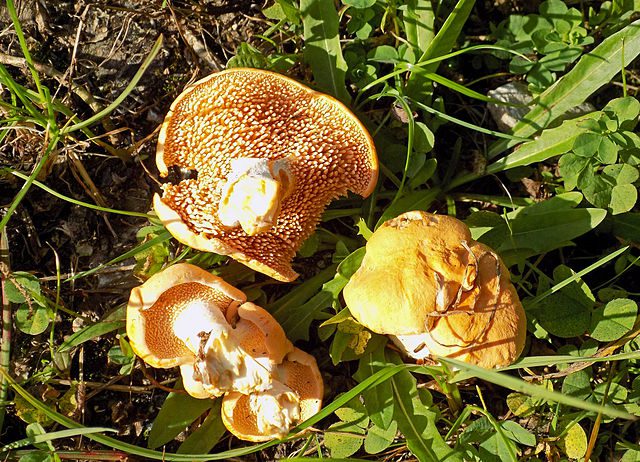
Jean-Marc Pascolo, CC BY-SA 4.0, via Wikimedia Commons
What you should know about mushroom picking
There are federal regulations in place governing mushroom picking. You must transport your mushrooms in a wicker basket (plastic bags ferment and harm the mushrooms), pluck them only when they reach a particular size, and cut them exclusively with a special knife with a curved blade. Furthermore, you must always leave some of the mushrooms behind (cut them so that the stem and spores remain in the ground) so that they can regrow. You must also ensure that you are not on private property, as this is clearly prohibited. You can pick mushrooms on any public land, and if you’re doubtful, contact your local mairie (town hall).
Planning a trip to Paris ? Get ready !
These are Amazon’s best-selling travel products that you may need for coming to Paris.
Bookstore
- The best travel book : Rick Steves – Paris 2023 – Learn more here
- Fodor’s Paris 2024 – Learn more here
Travel Gear
- Venture Pal Lightweight Backpack – Learn more here
- Samsonite Winfield 2 28″ Luggage – Learn more here
- Swig Savvy’s Stainless Steel Insulated Water Bottle – Learn more here
Check Amazon’s best-seller list for the most popular travel accessories. We sometimes read this list just to find out what new travel products people are buying.





